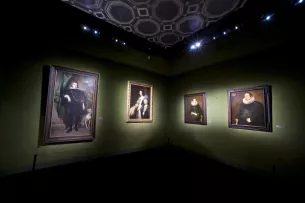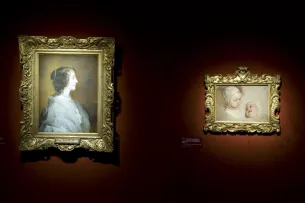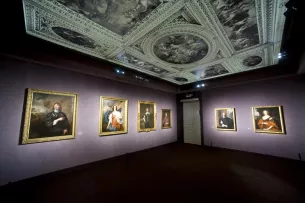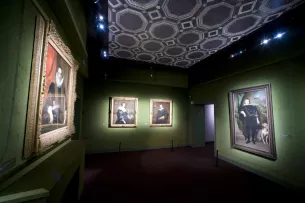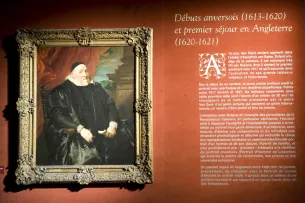ONLINE BOOKING STRONGLY RECOMMENDED. Due to the high number of visitors to the exhibition, access cannot be guaranteed for visitors without tickets.
Exhibition
Van Dyck
From 8 October 2008 to 25 January 2009, the Musée Jacquemart-André organised France’s first major retrospective of the work of Antoon Van Dyck. This exhibition established one of the major cultural events of autumn 2008.
The first exhibition, in France, devoted to Van Dyck as a portraitist
For many years now, the Musée Jacquemart-André has dedicated major exhibitions to exceptional artists. Following on from Largillière, David and Fragonard, Van Dyck has place of honour this year with - a first for France - paintings and a dozen drawings on loan from the most prestigious public collections in Europe and the United States, e.g. the Louvre (Paris), the British Museum (London), the Rijksmuseum (Amsterdam), the Nasjonalgalleriet (Oslo), the Pinacoteca Capitolina (Rome), the State Hermitage Museum (Saint Petersburg) and the J. Paul Getty Museum (Los Angeles), amongst others. Such a collection has never before been assembled, and the majority of these works have hitherto never been displayed to the French public.
The museum is paying homage to an artist unanimously considered in the XVII and XVIII centuries as Europe’s greatest portrait painter since Titian and whose influence on portrait painters in subsequent centuries was considerable.
Even today, Van Dyck still has the power to inspire fascination with his technical virtuosity and the elegance of his artistic skills. The exhibition retraces his life and works, and invites the visitor to accompany the artist on his journeys and to explore his sources of inspiration.
From child prodigy...
The exhibition opened with a view of Van Dyck’s early years and his first artistic works, produced in Antwerp, his city of birth. Antoon Van Dyck was a truly gifted youngster - Rubens became his mentor and friend when Van Dyck was barely eighteen years old. A wide-ranging selection of his early portraits, painted in the great tradition of Flemish portraiture, already reveals his desire to achieve a more relaxed yet enlivened style and also to highlight the nobility of his models by drawing his inspiration from portraits from the Italian Renaissance, notably the great Venetian tradition (Portrait of a Man, Lisbon, Calouste Gulbenkian Foundation).
Accompanying the young artist, the visitor will discover another world. Van Dyck made a journey to Italy (1621 to 1627) to broaden his knowledge of the Italian masters. He became the favourite artist of elegant Genoese society and produced a number of portraits, by turns spontaneous or serious, asserting his own style through an assimilation of the art of Rubens, Titian, the great portraitists from Bergamo (Moroni), and Raphael.
...to prince of portrait painters
On his return to Flanders, Van Dyck abandoned the traditional rigour of Flemish art. The works gathered into this collection are testimony to the great diversity of his compositions and his progress towards making his models feel at ease, while at the same time presenting a noble stance, combined with an exceptional arrangement of fine costumes and shimmering colours (Portrait of Maria de Tassis, Vienna, Liechtenstein Museum). His refined manner and the magnificence of his lifestyle perfectly suited his aristocratic clientele - he was the ideal “gentleman painter”.
Yet it was at the English court, where he arrived in the early 1630s, that Van Dyck truly became a court portraitist. In his portraits of the English aristocracy and of members of the Royal Family, the artist strikes a happy medium between the necessary degree of dignity, grandeur and a more relaxed air hitherto absent from portraits of royalty. This subtle balance is particularly apparent in his portraits of King Charles I. The exhibition ends with an unrivalled selection of these dazzling works for which the artist is justly famous.
A collection showing the great figures of his time
As the exhibition progresses, Van Dyck’s career as a portrait painter offers us a dazzling array of the most illustrious people in Europe during his lifetime, notably in England of the Stuart period (Portrait of the Palatine Princes, Paris, Louvre).

